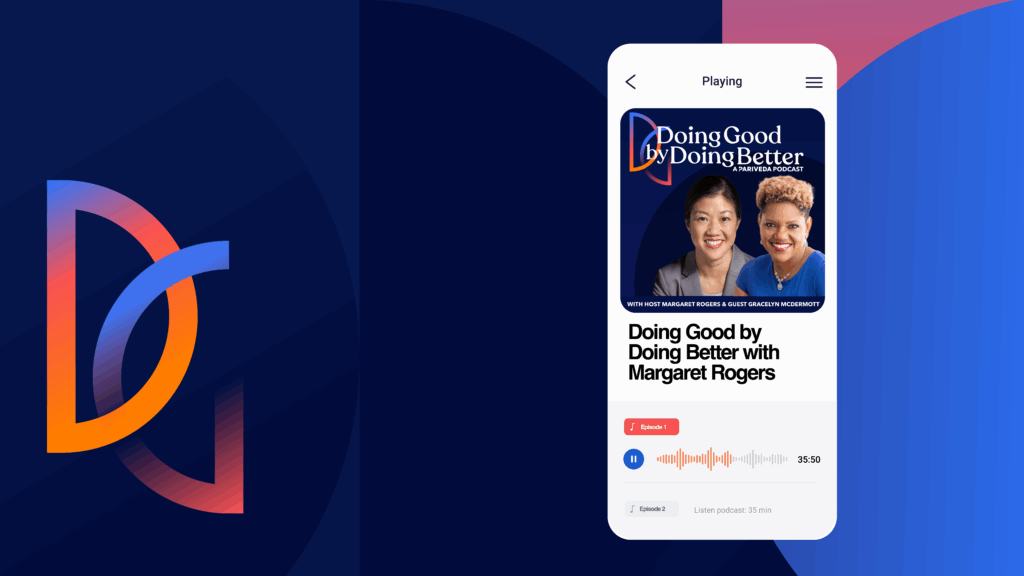Every product owner faces the same fundamental challenge: What should we build first? And just as crucial, what can wait?
The instinct for many product teams is to add more—more features, more functionality, more complexity—believing that expansion equates to progress. But in reality, great products aren’t about doing more. They’re about making intentional choices that create meaningful user experiences.
Consider the products that you can’t live without. They aren’t cluttered with features you never use. They’re simple, intuitive, and seamlessly deliver exactly what you need. Prioritization isn’t just about deciding what to build next; it’s about making the right decisions to build what truly matters. This requires a human-centered approach that balances user needs, business goals, and market dynamics.
The three key voices in prioritization
Creating products that people love requires listening to three essential voices: users, the business, and competitors.
Users: the heartbeat of your product
Your users hold the answers, if you’re willing to listen. What frustrates them? What keeps them coming back? What makes their lives easier? The best product decisions stem from deep user insights.
Key questions:
- What problem does this feature solve?
- What functionality do people love most?
- Where are they experiencing friction?
User needs are the foundation of successful products. But truly understanding those needs means going beyond passive feedback. It means engaging with users, observing how they interact with your product, and identifying the pain points they might not even articulate. A user may say they want faster performance but watching them struggle to navigate a menu may reveal a deeper issue.
Take the example of a platform plagued by slow load times. If customers frequently complain about speed, that should be a top priority. Because no matter how advanced a product becomes, it fails if it lacks usability.
Business: the reality check
A feature that delights users but doesn’t serve the business is a distraction. Every product decision should bridge the gap between user needs and strategic company goals.
Critical questions to ask:
- How does this feature support our key objectives?
- Will it drive retention, revenue, or engagement?
- What are the resource constraints we need to consider?
Business goals serve as the grounding force in prioritization, ensuring that product development aligns with the larger organizational objectives. For example, if revenue growth is the primary focus, features that improve conversion or enable upselling should rise to the top. On the other hand, if customer retention is a priority, efforts might shift toward improving customer support integrations or adding personalization features.
Additionally, resource constraints, such as development bandwidth, operational costs, and time-to-market considerations, play a vital role in shaping what can realistically be pursued. Even technically feasible features may not be viable now if they delay critical launches or overextend teams. Effective prioritization involves constantly balancing ambition with practicality.
Competitors: the market pulse
Ignoring the competition is risky. Understanding their strategies and identifying opportunities they’ve overlooked can create an advantage.
Ask:
- What features do they offer that we don’t?
- How are they solving the same user pain points?
- What differentiates us from them?
Competitive analysis is more than just feature-matching; it’s about positioning. If a competitor introduces an AI-powered search tool and your users struggle with navigation, that might signal an area for improvement. However, you need to determine if that solution aligns with your unique value.
Companies that focus too much on competitors risk becoming reactive rather than innovative. Instead of chasing trends, market leaders carve out their own path by identifying gaps in the market.
Beyond frameworks: a human-centered approach to prioritization
It’s tempting to reduce prioritization to a mechanical exercise: stack features in a backlog, rank them in a framework, and move forward. But rigid frameworks alone aren’t enough. The best products emerge when prioritization is infused with human insight.
1. Deep user understanding
Numbers reveal trends, but they don’t capture nuance. Move beyond surveys and analytics to observe real user behavior, conduct conversations, and seek the underlying “why.”
2. Reframing problems
What users say they want and what they actually need often diverge. The most impactful innovations address pain points users didn’t even realize they had.
3. Creative ideation
Prioritization isn’t just about cutting features—it’s about discovering unexpected opportunities that align with both user needs and business objectives.
4. Rapid testing & iteration
The only way to know if a feature should be built is to test it early, test it often, and refine it based on real feedback. Small, iterative improvements drive long-term success.
Using data to prioritize smarter
Prioritization must be informed by both data and intuition. This means blending both quantitative and qualitative insights.
Quantitative data: the hard facts
Numbers don’t lie. Understanding usage patterns helps guide prioritization decisions.
- What features drive the most engagement?
- Where are users dropping off?
- Which functionalities contribute to revenue growth?
Quantitative data, such as usage patterns, engagement metrics, and revenue growth, provides hard facts that highlight what’s working and where improvements are needed. Tracking feature usage reveals which functionalities attract attention, and identifying drop-off points helps prioritize areas for improvement. In other words, if 80% of users engage with one feature while another is barely touched, the focus should be obvious.
Qualitative data: the story behind the numbers
Data can tell you what is happening, but it doesn’t tell you why. This is where qualitative insights like customer interviews, feedback, and surveys become invaluable. Qualitative data adds depth to the numerical insights by capturing the voice of the customer through user feedback, surveys, and interviews.
Considerations:
- Why are users abandoning certain features?
- What’s confusing or frustrating them?
- What do they wish they had?
This type of information helps us understand user motivations, pain points, and unmet needs so that prioritization efforts align with customer expectations and drive impactful results.
Leading with AI in prioritization
AI is revolutionizing how product teams prioritize. By leveraging machine learning, teams can make smarter, data-driven decisions faster.
Imagine a world where product decisions aren’t just based on gut instinct but are backed by real-time behavioral insights. AI can uncover hidden patterns in user engagement, flagging features that silently drive retention or warning against those that are losing traction. It can forecast the impact of new functionality before a single line of code is written, allowing teams to make preemptive adjustments that save time and resources.
As AI-driven tools become more sophisticated, they’re shifting prioritization from reactive to proactive. Companies that embrace this shift will move faster, adapt sooner, and ultimately build products that feel intuitive and indispensable.
Examples of How AI Enhances Prioritization:
- Predictive Analytics: AI can analyze behavioral patterns to predict which features will drive the most engagement.
- Personalized Journeys: AI-driven recommendations create tailored experiences for different user segments.
- Automated Decision-Making: AI can simulate “what-if” scenarios to forecast feature success.
The bottom line
Prioritization isn’t just about feature ranking—it’s about building with purpose. The goal isn’t to build more; it’s to build what matters most. That means saying no to distractions, aligning every decision with user needs and business goals, and focusing resources where they’ll have the biggest impact.
Great products aren’t bloated. They’re focused, intuitive, and continuously refined based on real feedback and measurable outcomes. When teams prioritize with intention and follow insight over instinct, they don’t just deliver features. They deliver value.
Want help cutting through the noise and focusing on what matters most? Let’s talk about how we can help your team make smarter, faster product decisions that lead to meaningful outcomes.


















